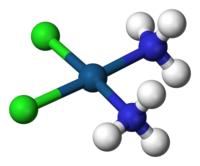
Deep-Blue Phosphorescent Ir(III) Complexes with Light-Harvesting Functional Moieties for Efficient Blue and White PhOLEDs in Solution-Process
Sign Up to like & getrecommendations! Published in 2017 at "Advanced Functional Materials"
DOI: 10.1002/adfm.201701002
Abstract: The photoluminescence (PL) efficiency of emitters is a key parameter to accomplish high electroluminescent performance in phosphorescent organic light-emitting diodes (PhOLEDs). With the aim of enhancing the PL efficiency, this study designs deep-blue emitting heteroleptic… read more here.
Keywords: deep blue; tbucn firpic; iii;

AIE Multinuclear Ir(III) Complexes for Biocompatible Organic Nanoparticles with Highly Enhanced Photodynamic Performance
Sign Up to like & getrecommendations! Published in 2019 at "Advanced Science"
DOI: 10.1002/advs.201802050
Abstract: Abstract The singlet oxygen (1O2) generation ability of a photosensitizer (PS) is pivotal for photodynamic therapy (PDT). Transition metal complexes are effective PSs, owing to their high 1O2 generation ability. However, non‐negligible cellular toxicity, poor… read more here.
Keywords: generation ability; iii; iii complexes; aie ... See more keywords

Experimental and theoretical studies of new Co(III) complexes of hydrazide derivatives proposed as multi‐target inhibitors of SARS‐CoV‐2
Sign Up to like & getrecommendations! Published in 2022 at "Applied Organometallic Chemistry"
DOI: 10.1002/aoc.6836
Abstract: Cobalt(III) complexes with Schiff base ligands derived from hydrazone, (HL 1 = (E)‐N′‐(3,5‐dichloro‐2‐hydroxybenzylidene)‐4‐hydroxybenzohydrazide, HL 2 = (E)‐N′‐(3,5‐dichloro‐2‐hydroxybenzylidene)‐4‐hydroxybenzohydrazide (3,5‐dibromo‐2‐hydroxybenzylidene), and HL 3 = (E)‐4‐hydroxy‐N′‐(2‐hydroxy‐3‐ethoxybenzylidene)benzohydrazide), were synthesized and characterized by elemental analysis, Fourier transform infrared (FT‐IR) spectroscopy, UV–Vis spectroscopy, and… read more here.
Keywords: experimental theoretical; iii complexes; spectroscopy; iii ... See more keywords

Structure characterization and adsorption properties of tetraethylenepentamine ion exchange fiber
Sign Up to like & getrecommendations! Published in 2017 at "Journal of Applied Polymer Science"
DOI: 10.1002/app.44513
Abstract: A novel tetraethylenepentamine ion exchange fiber (TAIEF) was prepared using polypropylene grafted styrene (PP-g-ST) fiber as raw material. The chemical structure of TAIEF was characterized using infrared spectrum (IR) method. TAIEF had good appearance and… read more here.
Keywords: tetraethylenepentamine ion; iii; adsorption; ion exchange ... See more keywords

Poly(styrene–divinyl benzene)‐immobilized Fe(III) complex of 1,3‐bis(benzimidazolyl)benzene: Efficient catalyst for the photocatalytic degradation of xylenol orange
Sign Up to like & getrecommendations! Published in 2018 at "Journal of Applied Polymer Science"
DOI: 10.1002/app.46480
Abstract: A polymer-supported Fe(III) complex of 1,3-bis(benzimidazolyl)benzene [PS–Fe(III)BBZNH] was used in the photodegradation of xylenol orange (XO) dye with H2O2 under UV irradiation. The catalyst was synthesized and characterized by elemental analysis, and Fourier transform infrared,… read more here.
Keywords: iii; complex bis; benzimidazolyl benzene; benzene ... See more keywords

Cloning and characterization of Aedes aegypti juvenile hormone epoxide hydrolases (JHEHs).
Sign Up to like & getrecommendations! Published in 2022 at "Archives of insect biochemistry and physiology"
DOI: 10.1002/arch.21977
Abstract: Juvenile hormone epoxide hydrolase (JHEH) plays an important role in the metabolism of juvenile hormone III (JH III) in insects. To study the role that JHEH plays in female Aedes aegypti JHEH 1, 2, and 3 complementary… read more here.
Keywords: jheh; aedes aegypti; juvenile hormone; iii ... See more keywords

Synthesis and biological evaluation of salophen nickel(II) and cobalt(III) complexes as potential anticancer compounds
Sign Up to like & getrecommendations! Published in 2023 at "Archiv der Pharmazie"
DOI: 10.1002/ardp.202200655
Abstract: Recent in vitro investigations of N,N′‐bis(salicylidene)‐1,2‐phenylenediamine (SAP) iron(III) complexes substituted with alkyl (ethyl, propyl, butyl) carboxylates at position 4 in tumor and leukemia cells revealed strong cytotoxic activity. In continuation of this study, analogous nickel(II)… read more here.
Keywords: iii; nickel cobalt; iii complexes; cobalt iii ... See more keywords

SAXS structure of homodimeric oxyHemoglobin III from bivalve Lucina pectinata
Sign Up to like & getrecommendations! Published in 2021 at "Biopolymers"
DOI: 10.1002/bip.23427
Abstract: Hemoglobin III (HbIII) is one of the two oxygen reactive hemoproteins present in the bivalve, Lucina pectinata. The clam inhabits a sulfur‐rich environment and HbIII is the only hemoprotein present in the system which does… read more here.
Keywords: iii; structure; lucina pectinata; bivalve lucina ... See more keywords

Functional Disruption of Gli1‐DNA Recognition via a Cobalt(III) Complex
Sign Up to like & getrecommendations! Published in 2022 at "ChemMedChem"
DOI: 10.1002/cmdc.202200025
Abstract: The aberrant activation of the Gli family of zinc finger transcription factors (ZFTFs) is associated with several types of human cancer, including medulloblastoma and basal cell carcinoma. We have reported the use of cobalt(III) Schiff‐base… read more here.
Keywords: dna; cobalt iii; gli1; dna recognition ... See more keywords

Redox Equilibration Observed for the Reduction of a Ruthenium(III) Complex by Ascorbate under Low‐Driving‐Force Conditions
Sign Up to like & getrecommendations! Published in 2017 at "European Journal of Inorganic Chemistry"
DOI: 10.1002/ejic.201700241
Abstract: A detailed kinetic study of the reduction of trans-[RuCl2(dipicOEt)2]-, where dipicOEt = dipicolinate mono ethyl ester anion, by L-ascorbic acid that leads to the formation of the corresponding Ru(II) complex, was carried out spectrophotometrically using… read more here.
Keywords: iii; reduction; low driving; driving force ... See more keywords

Revisiting Formal Copper(III) Complexes: Bridging Perspectives with Quasi‐d 10 Configurations
Sign Up to like & getrecommendations! Published in 2022 at "European Journal of Inorganic Chemistry"
DOI: 10.1002/ejic.202200247
Abstract: Abstract The formal Cu(III) complex [Cu(CF3)4]1− has often served as a paradigmatic example of challenging oxidation state assignment – with many reports proposing conflicting descriptions. Here we report a computational analysis of this compound, employing… read more here.
Keywords: formal copper; iii complexes; iii; revisiting formal ... See more keywords